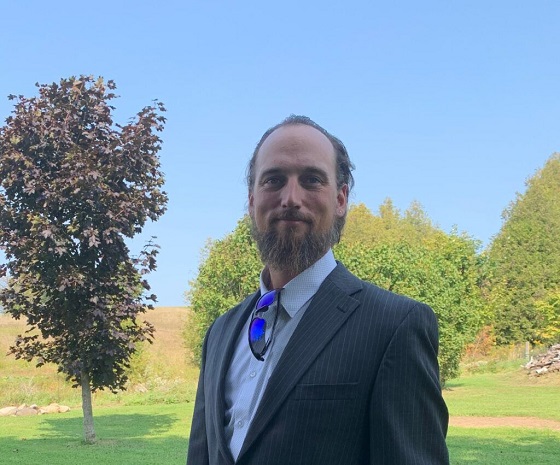Alberta
ONE RELATIONSHIP AT A TIME: THE PATH TO PROJECT SUCCESS

ONE RELATIONSHIP AT A TIME: THE PATH TO PROJECT SUCCESS

Infrastructure development is full of risks, which are managed in a number of ways. Risk management might sound cold and impersonal, but it has the potential to incent real human connections and build genuine relationships. Key risks may have leading practice on how best to mitigate, transfer, ignore or hold those risks, but when it comes to energy development across Canada, meaningful consultation and accommodation is non- negotiable. As most are well aware at this point, the Crown must consult and accommodate where Aboriginal or Treaty rights are impacted. Far from being a mandatory ‘checkbox’ in the process of project development, the undertaking of engagement and relationship-building holds the potential for mutual benefits for both the project and the impacted First Nations, Inuit, or Métis community.
Genuine relationship-building is a solid foundation for partnership on energy projects, to the benefit of both parties. This partnership can take the form of Impact Benefit Agreements (IBA) Mutual Benefit Agreements (MBA) or equity participation arrangements, among others. Both IBAs and equity arrangements have the potential to grow economic and social prosperity, but determining which approach is the best fit will be influenced by the priorities and capacity of both the developer and the Indigenous community.
In both these common approaches there are similar objectives:
- Compensation for and mitigation of potential impact
- Influence or control over project design and development
- Securing benefits for the community
- Securing social license
- Working towards consent and support of the project
- Reduced risk of opposition or disruption
- Improved financing as a result of managed risks
Both also reflect an underlying premise that it is no longer acceptable to develop resources or energy infrastructure in a manner where impacts fall to one party, and benefits to the other.
When comparing and contrasting IBAs and equity arrangements, some key considerations are the degree of potential impact, the capacity and interest of the community in the project’s development and management, the project’s term, risk tolerance of either party, and financing and funding opportunities.
Impact Benefit Agreements between a project developer and impacted Indigenous community formalize project benefits sharing. Often, these IBAs will provide some employment, training, and contracting opportunities, but the economic benefits will often be tied to the project’s degree of impact to traditional lands and lifestyle (e.g., land impacts, hunting and gathering impacts, etc.). Regardless of how well the project is performing, the IBAs will guarantee a steady revenue stream to the Indigenous community. This can be a safe bet for risk adverse councils but holds the potential for serious revenue inequity in the case where the project is successful and very profitable.
Pivoting from partnership to ownership, equity participation agreements clearly scale the revenue sharing between the project developer and community as the project success and profitability increases. If the energy project does well, the First Nation, Inuit, or Métis equity partner is also going to do well and see greater revenues. The inverse is also true. In these equity arrangements, which are becoming more prevalent in the eastern provinces, the Indigenous partner has a greater say in project operations, as they are a shareholder. It also arguably provides more security to the developers, as the Indigenous partner is a proponent of the project, and no longer a potential opponent. Both partners would look to maximize the economic benefits of the project, while minimizing the adverse economic, environmental and social consequences flowing from the project. Without focusing too much on the direct revenue arrangement, equity arrangements will often also include guaranteed or preferential opportunities for contracting, procurement, employment and training.
To be clear, in either an IBA or equity arrangement model, the duty to consult and accommodate is neither negated nor automatically fulfilled. But the relationship between developer and community becomes formalized and clearer, adding transparency and certainty to an otherwise risk-filled process.
Managing project risk is a mandatory part of project development. But the means of managing risk holds so much potential for empowerment, leadership, and benefit. Project success and economic development are not an end in themselves, but rather a means to an end – the end being healthier and more prosperous First Nations, Inuit, and Métis communities, and Canada as a whole. All the while moving the dial on reconciliation through real connections, business developments, and cultural education – one relationship at a time.
Robyn Budd was a 2019 member of the Energy Council of Canada’s Young Energy Professionals program and was a Manager in KPMG’s Global Infrastructure Advisory practice, based in the unceded territory of the Musqueam, Squamish, and Tsleil-Waututh nations (Vancouver). She was also the Leader of KPMG’s National Indigenous Network.
Zachary McCue is Founder of The Waabgaag Group, with expertise in renewable, infrastructure, and resource development, specializing in equity participation and impact benefit agreements. He is a proud member of Curve Lake First Nation and is based in Ontario.
Thanks to Todayville for helping us bring our members’ stories of collaboration and innovation to the public.
Click to read a foreward from JP Gladu, Chief Development and Relations Officer, Steel River Group; Former President and CEO, Canadian Council for Aboriginal Business.

JP Gladu, Chief Development and Relations Officer, Steel River Group; Former President & CEO, Canadian Council for Aboriginal Business
Click to read comments about this series from Jacob Irving, President of the Energy Council of Canada.

Jacob Irving, President of Energy Council of Canada
The Canadian Energy Compendium is an annual initiative by the Energy Council of Canada to provide an opportunity for cross-sectoral collaboration and discussion on current topics in Canada’s energy sector. The 2020 Canadian Energy Compendium: Innovations in Energy Efficiency is due to be released November 2020.
Click to read more stories from this series.
INDIGENOUS CONSULTATION AND ENGAGEMENT AT CANADA’S ENERGY AND UTILITY REGULATORS
Agriculture
Lacombe meat processor scores $1.2 million dollar provincial tax credit to help expansion

Alberta’s government continues to attract investment and grow the provincial economy.
The province’s inviting and tax-friendly business environment, and abundant agricultural resources, make it one of North America’s best places to do business. In addition, the Agri-Processing Investment Tax Credit helps attract investment that will further diversify Alberta’s agriculture industry.
Beretta Farms is the most recent company to qualify for the tax credit by expanding its existing facility with the potential to significantly increase production capacity. It invested more than $10.9 million in the project that is expected to increase the plant’s processing capacity from 29,583 to 44,688 head of cattle per year. Eleven new employees were hired after the expansion and the company plans to hire ten more. Through the Agri-Processing Investment Tax Credit, Alberta’s government has issued Beretta Farms a tax credit of $1,228,735.
“The Agri-Processing Investment Tax Credit is building on Alberta’s existing competitive advantages for agri-food companies and the primary producers that supply them. This facility expansion will allow Beretta Farms to increase production capacity, which means more Alberta beef across the country, and around the world.”
“This expansion by Beretta Farms is great news for Lacombe and central Alberta. It not only supports local job creation and economic growth but also strengthens Alberta’s global reputation for producing high-quality meat products. I’m proud to see our government supporting agricultural innovation and investment right here in our community.”
The tax credit provides a 12 per cent non-refundable, non-transferable tax credit when businesses invest $10 million or more in a project to build or expand a value-added agri-processing facility in Alberta. The program is open to any food manufacturers and bio processors that add value to commodities like grains or meat or turn agricultural byproducts into new consumer or industrial goods.
Beretta Farms’ facility in Lacombe is a federally registered, European Union-approved harvesting and meat processing facility specializing in the slaughter, processing, packaging and distribution of Canadian and United States cattle and bison meat products to 87 countries worldwide.
“Our recent plant expansion project at our facility in Lacombe has allowed us to increase our processing capacities and add more job opportunities in the central Alberta area. With the support and recognition from the Government of Alberta’s tax credit program, we feel we are in a better position to continue our success and have the confidence to grow our meat brands into the future.”
Alberta’s agri-processing sector is the second-largest manufacturing industry in the province and meat processing plays an important role in the sector, generating millions in annual economic impact and creating thousands of jobs. Alberta continues to be an attractive place for agricultural investment due to its agricultural resources, one of the lowest tax rates in North America, a business-friendly environment and a robust transportation network to connect with international markets.
Quick facts
- Since 2023, there are 16 applicants to the Agri-Processing Investment Tax Credit for projects worth about $1.6 billion total in new investment in Alberta’s agri-processing sector.
- To date, 13 projects have received conditional approval under the program.
- Each applicant must submit progress reports, then apply for a tax credit certificate when the project is complete.
- Beretta Farms has expanded the Lacombe facility by 10,000 square feet to include new warehousing, cooler space and an office building.
- This project has the potential to increase production capacity by 50 per cent, thereby facilitating entry into more European markets.
Related information
Alberta
Alberta Next: Alberta Pension Plan

From Premier Danielle Smith and Alberta.ca/Next
Let’s talk about an Alberta Pension Plan for a minute.
With our young Alberta workforce paying billions more into the CPP each year than our seniors get back in benefits, it’s time to ask whether we stay with the status quo or create our own Alberta Pension Plan that would guarantee as good or better benefits for seniors and lower premiums for workers.
I want to hear your perspective on this idea and please check out the video. Get the facts. Join the conversation.
Visit Alberta.ca/next
-

 Agriculture2 days ago
Agriculture2 days agoCanada’s supply management system is failing consumers
-

 Alberta1 day ago
Alberta1 day agoAlberta uncorks new rules for liquor and cannabis
-

 Energy19 hours ago
Energy19 hours agoB.C. Residents File Competition Bureau Complaint Against David Suzuki Foundation for Use of False Imagery in Anti-Energy Campaigns
-

 COVID-1919 hours ago
COVID-1919 hours agoCourt compels RCMP and TD Bank to hand over records related to freezing of peaceful protestor’s bank accounts
-

 Crime1 day ago
Crime1 day agoProject Sleeping Giant: Inside the Chinese Mercantile Machine Linking Beijing’s Underground Banks and the Sinaloa Cartel
-

 International1 day ago
International1 day agoTrump transportation secretary tells governors to remove ‘rainbow crosswalks’
-

 Alberta23 hours ago
Alberta23 hours agoAlberta Next: Alberta Pension Plan
-

 C2C Journal17 hours ago
C2C Journal17 hours agoCanada Desperately Needs a Baby Bump




